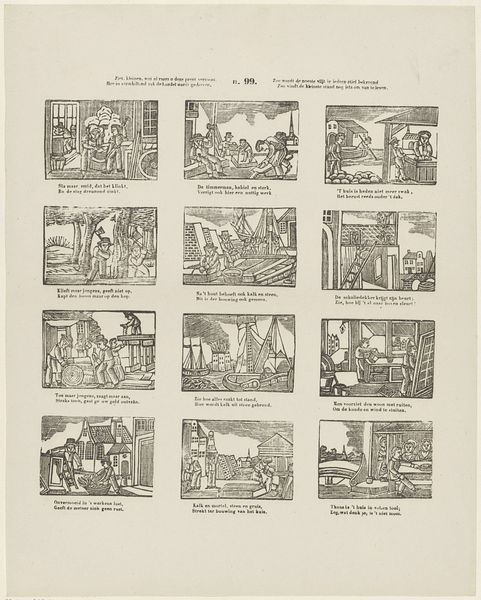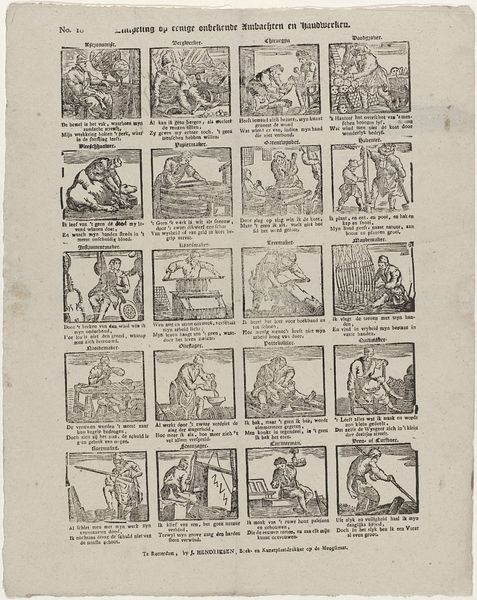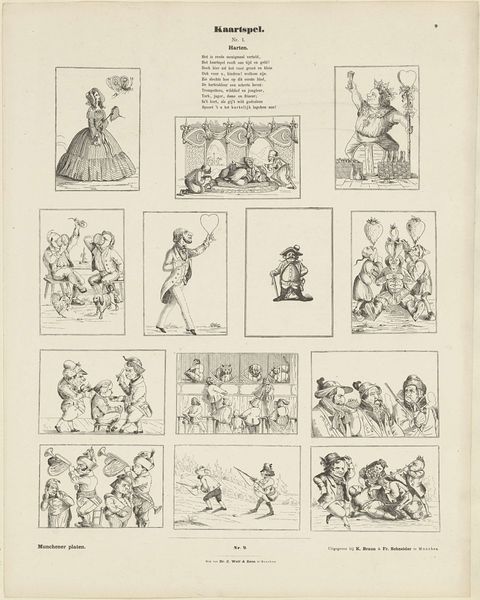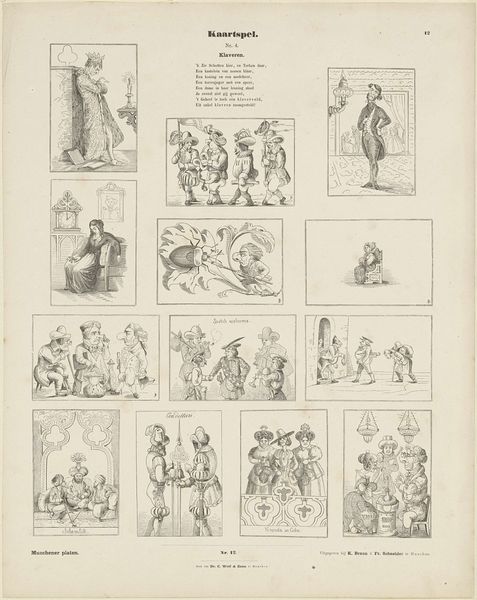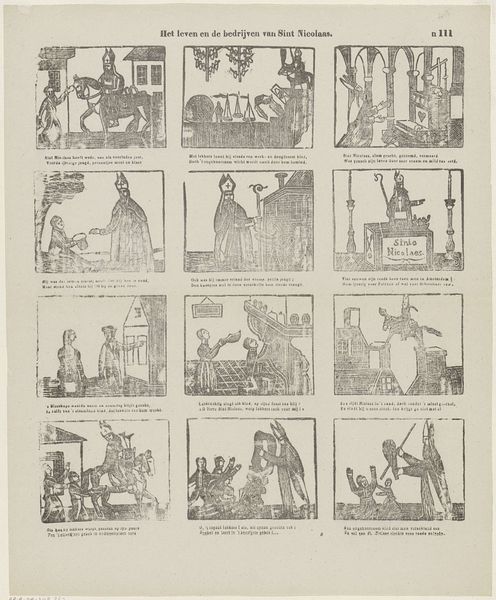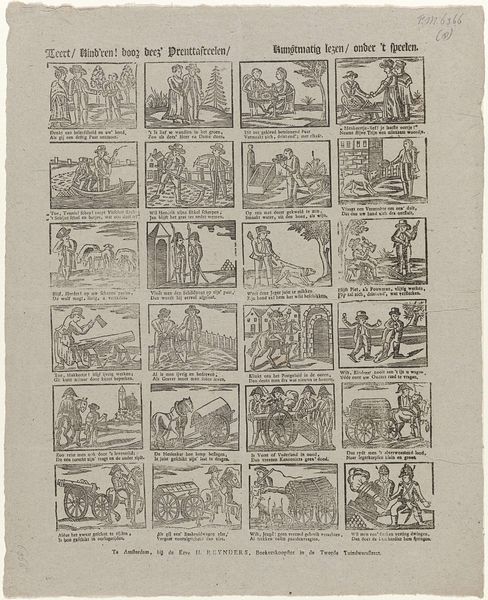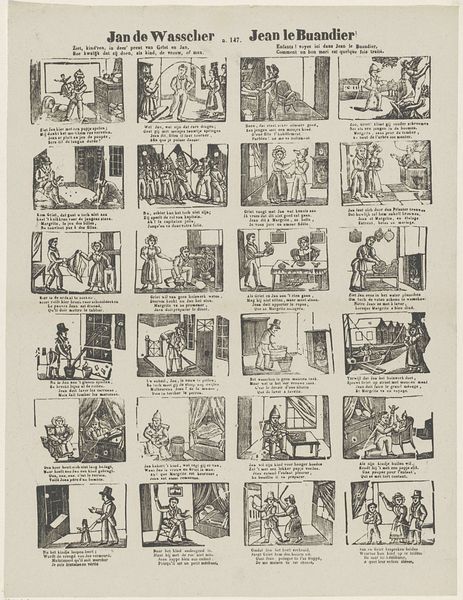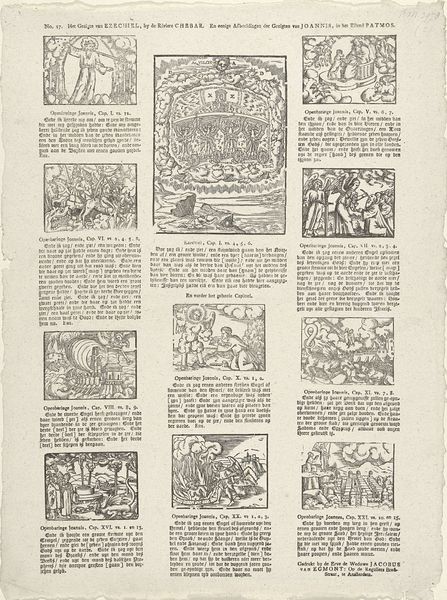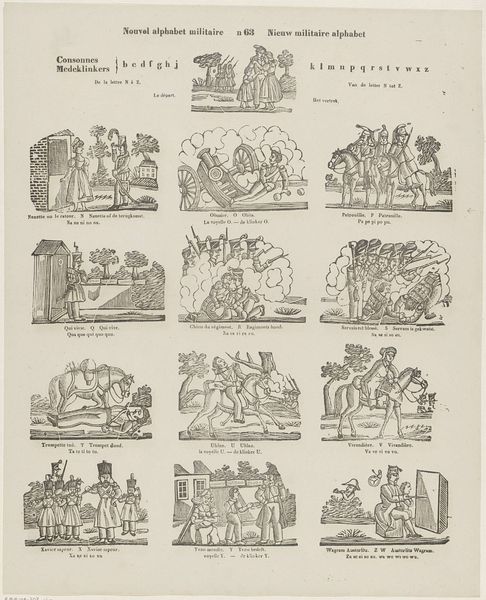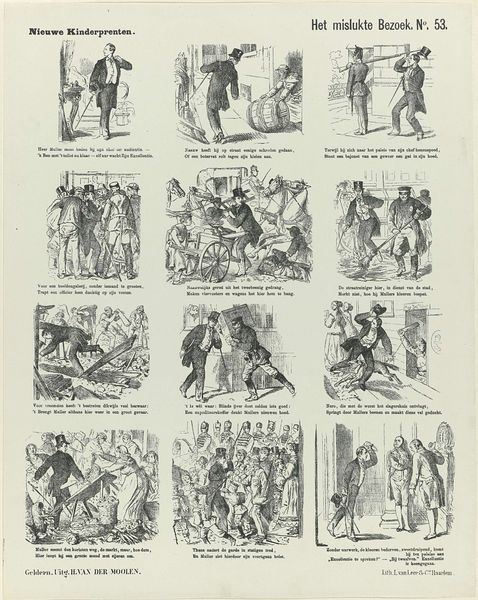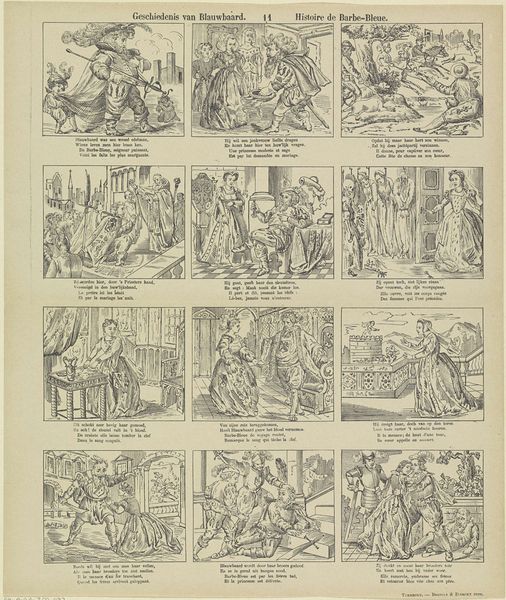
#
narrative-art
# print
#
genre-painting
Dimensions: height 395 mm, width 317 mm
Copyright: Rijks Museum: Open Domain
Curator: Here we have “Het Brood,” or “The Bread,” a print that we believe dates from between 1856 and 1900 and is attributed to the studio of Glenisson & Zonen. It’s a fascinating example of narrative art. Editor: It reminds me a little bit of early comics, almost like a visual storyboard charting the journey of bread. There’s something very earthy and grounded about its composition and materiality. Curator: Exactly! I think we can interpret each scene almost as a vignette illuminating the social relations tied to bread production and consumption. Consider the figures tilling the land, milling the grain, or families seated at a table—they all highlight the complex choreography of labor. Editor: I see what you mean. This is not some romantic idyll of rural life. There is a clear sense of the social and economic context that produces food. Notice the details—the type of tools being used, the rudimentary structures—and it speaks to a specific lived experience. Curator: And the verses that accompany each picture underscore that everyday life. We’re not simply seeing images but narratives infused with value judgments. Are we to believe those who partake of bread earn their lot? Are the toilers to be forever toiling, only ever gaining a tiny fraction? The artist might be showing all levels of society in relationship to each other here. Editor: This definitely brings a materialist perspective to the fore. Consider that the medium here is print. It means the artwork could have been reproduced and circulated widely. That speaks to the increasing awareness of the lives and labor practices behind basic sustenance in that era. Curator: What is thought-provoking is how relevant this narrative remains. Thinking about supply chains, and exploitation, we’re encouraged to reflect on how what we consume arrives on our tables today. Editor: I completely agree. Examining such art compels us to analyze both the materials that constitute our world and the invisible social infrastructures they imply.
Comments
No comments
Be the first to comment and join the conversation on the ultimate creative platform.

